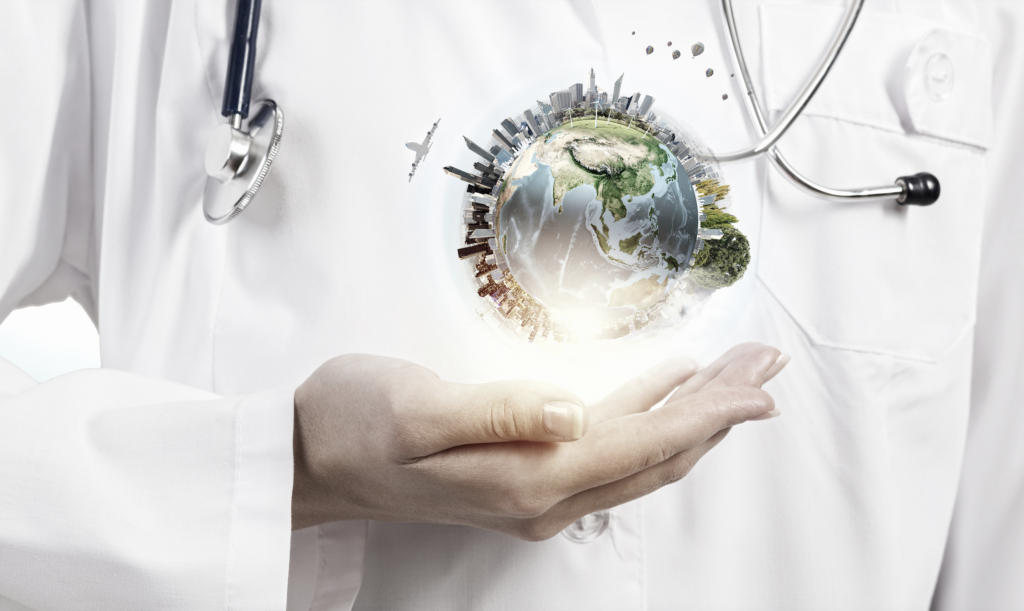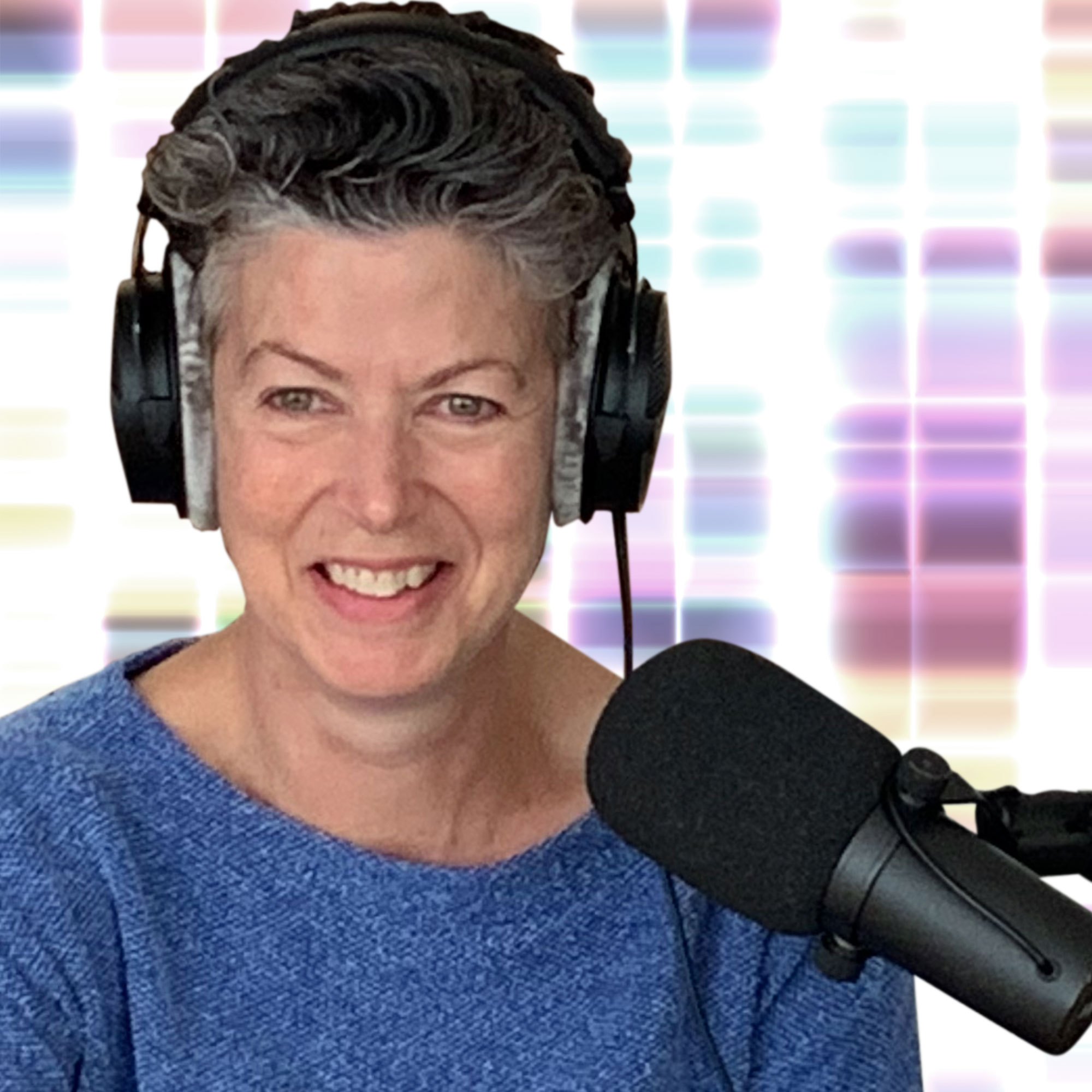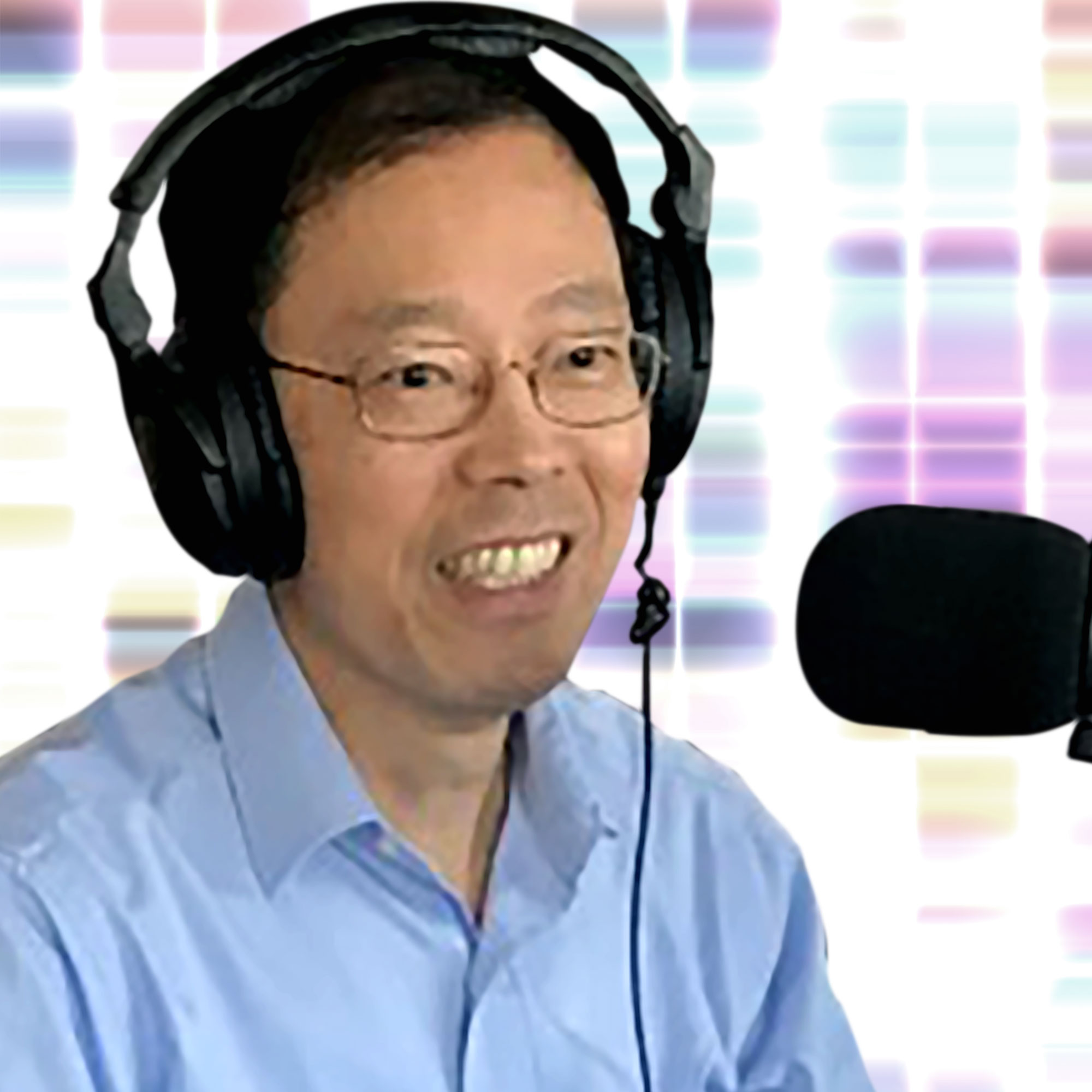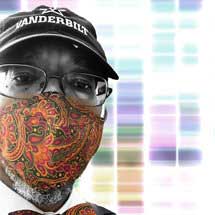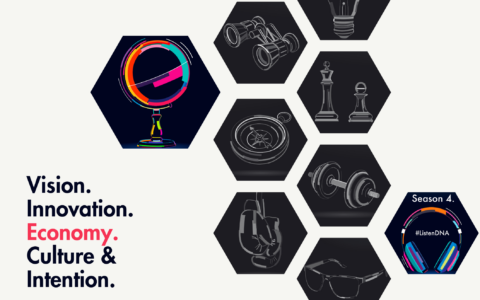Guests in this episode are evaluating and studying various facets of nature to build a blueprint of how the current environment impacts health.
Meet the guests:
Tina Hartert, MD, MPH, Director, Center for Asthma and Environmental Sciences Research and Vice President for Translational Research
Hartert and Mike Vandenbergh, JD, Director of the Climate Change Research Network and Co-director, Energy, Environment and Land Use Program at Vanderbilt Law School, are leading a two-part study focused on electric vehicles (EVs). One part is geared toward understanding the how fossil fuel emissions from cars impact health and what an electric vehicle fleet will do to improve population-level health. The second part of the project is focused on understanding barriers to uptake and acceptance of EVs in the United States.
“Electrification of transportation is clearly accelerating in the United States and around the world. I think what’s not well understood is how electrification of vehicles can contribute not only [to] climate, but to very important health effects on human populations as well. The majority of our world lives in areas that are too polluted compared to what guidelines are for safe living,” said Hartert.
Wei Zheng, MD, PhD, MPH, Director of the Division of Epidemiology, and Director of the Vanderbilt Epidemiology Center at Vanderbilt University Medical Center; Associate Director for Population Sciences Research at the Vanderbilt-Ingram Cancer Center
Zheng and colleagues, as well as partners across the Southeast, are leading a groundbreaking observational study as to how the elements and particles in the air impact health and well-being over the long-term. They are looking for carcinogens, but are also interested in relationships to Type 2 diabetes and heart disease.
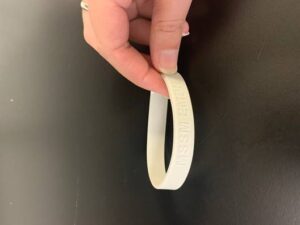
People will wear a wrist band that catches particles — similar to sticky tape catching flies — and that will get analyzed, and the participants will be tracked over the long-term.
“Our study is the first large study to comprehensively evaluate the exposure level of study participants and relate the exposure to disease risk. This is really kind of huge advance in this science,” said Zheng.
Southern Environmental Health Study is actively recruiting 50,000 people to understand how our environment and our day-to-day experiences may impact our health. The study is a collaboration of scientists and healthcare providers across the Southeast.
Find out more, and help scientists learn about us!
Jeffrey Upperman, MD, Surgeon-in-Chief at Monroe Carell Jr. Children’s Hospital at Vanderbilt
Upperman is a trauma preparedness expert and has looked at the use of emergency apps in extreme weather instances, particularly tornadoes. However, he and his colleagues im Nashville — and across the country —are mindful that it’s not only extreme weather that lands adults and children in emergency departments.
“You have to take the full spectrum of nature, which includes human nature, and understand where are we at as a society. We have to be prepared for chaos and mass movements of people due to — whatever you want to call it: our social fabric being ripped, our social fabric being torn. And then on top of that, you sprinkle in natural disasters,” said Upperman. “Then it becomes a very complex equation. So it’s not just a matter of the randomness, it’s paying attention to all of those things that could disrupt your happy life. I think we need to grow a healthy respect for all forms of nature.”
DNA: Discoveries in Action Season 3 Transcript – How To… Fill In The Knowledge Gap
Dr. Tina Hartert: So electrification of transportation is clearly accelerating in the United States and around the world. And I think what’s not well understood is how electrification of vehicles can contribute not only to important air pollutants and climate but to very important health effects of human populations as well. So the majority of our world live in areas that are too polluted compared to what guidelines are for safe living.
Dr. Wei Zheng: We know based on a lot of research estimate, about 80% of cancer are caused by environmental exposures, lifestyle factors. So I think a lot of enthusiasm from the community to do this kind of study. So actually, it’s just being contacted recently by a person from a small town in Tennessee, and she mentioned that potentially cancer cluster in that environment. And she asked what we can do to help to identify what kind of exposures that may increase cancer risk in that community.
Dr. Jeffrey Upperman: So then you have to take the full spectrum of nature, which includes human nature and understand where are we at as a society when we have to be prepared for chaos and mass movements of people due to whatever you want to call it, our social fabric being ripped, our social fabric being torn. And then on top of that, you sprinkle in natural disasters, then it becomes a very complex equation.
Clark Buckner: Hello and welcome back. This is part two of our conversation about the symbiotic relationship between people and the environment and how it impacts health. Climate, environment, and health, well, it often feels like you’re clinging to an edge of Everest. Think of this series of episodes and the upcoming live chat as a guide rope along the way. There’s still work and adventure, but you’ve got a line to hold, and we’re excited to have you joining us.
I’m your host, Clark Buckner. Discoveries in Action is about the big ideas and breakthroughs happening at Vanderbilt Health. And with that said, let’s get climbing. The work today’s guests are doing is fascinating. They are filling gaps in our knowledge base and preparing tactics to help us and our kids when disaster strikes in the future. Up first is an internationally-renowned asthma expert.
Dr. Tina Hartert: Hello, I’m Tina Hartert. I’m a professor of medicine and pediatrics at Vanderbilt University School of Medicine and the director of the Center for Asthma Research. I have not spent a lot of my career focused exclusively on pollution. We have looked at pollution in our studies, but our focus actually has largely been on respiratory viruses, dietary factors, and their contribution to asthma. But this is something I’m just personally passionate about, actually. We live in a city that, compared with our peer cities, actually, we haven’t had a plan for electrification of mass transit or school buses. I think that there are groups of people who think about electric vehicles as something the wealthy have just for their own personal use, and I think that’s changing. You can see that the auto manufacturers are changing the types of vehicles they’re developing.
Mike Vandenbergh, who’s a professor of law in the law school at Vanderbilt University, and myself are leading a study focused on electric vehicles, and the study really has two major parts. One is understanding the contribution of fossil fuels to health effects and what electric vehicles will bring to improving population-level health. And the second project is focused on understanding barriers to uptake and acceptance of electric vehicles in the United States. What we know is that the pollution that’s generated from fossil fuel vehicles, this particulate pollution, has the most significant impact on health, on adverse health outcomes. And so focusing on how we can reduce this particulate pollution is critically important to improving health.
And what we know in the United States is at least 35% of the population, and this is estimated by the EPA, live in areas of severe pollution. And these areas are often inner cities and environmental justice neighborhoods, and they’re the most impacted and they’re actually the neighborhoods that contribute the least to actually producing this type of pollution, yet suffer the most adverse health consequences. So the focus of understanding the contribution of fossil fuel and then modeling what electric vehicles can do to improve health. The study that we’re going to work on is really focused in the US, and it’s focused on US populations and it’s focused on understanding the contributions introduction of electric vehicles could actually have in cities around the US hoping to change policy in these areas.
Now there have been some recent estimates related to this. The American Lung Association just recently came out with a report that estimated that the shift to zero-emission technology, so electric vehicles, would produce over $1.2 trillion of health benefits and over 110,000 lives saved.
Clark Buckner: Earlier this year, a respected cancer researcher from the UK led a paper that delineates a link between car fumes and lung cancer, a disease that is mostly associated with smokers.
Dr. Tina Hartert: I think in general, many people think of pollution as one thing, and what we know is that there’s a very different type of pollution that’s generated from fossil fuel vehicles. And it’s this particulate matter pollution that’s generated from fossil fuel vehicles, not only from the engines but actually the tires and the brakes. And this type of particulate pollution actually is a major contributor to adverse health outcomes. So there’s different size particulate matter, and depending on the size of it, it contributes to different adverse health outcomes.
And so we talk about particulate matter sizes usually in the range of 2.5 to 10 microns in size, and we’re particularly interested in the PM2.5 particulate matter. And this size particulate matter can be inhaled into the lung and not filtered at the level of the nose. Now, it doesn’t mean that things that come into the nose can’t cause adverse consequences, because take pollen for example. People who are allergic to tree pollen actually produce these specific antibodies just to tree pollen, and that’s the allergic reaction. Now, that’s different than something that’s an irritant to the nose. So something like a strong chemical smell, or for some people a perfume or something like that, where they breathe it in and their nose starts to water or their eyes start to… That’s an irritant reaction. That’s not an allergic reaction. So these particulate matter from fossil fuels at the level of the nose act as an irritant, but it can absolutely set up inflammation in the nose. But these certain size particles also can be inhaled into the lung as well, and that’s why they contribute very significantly to adverse health effects.
Clark Buckner: Sometimes I look at those small clouds of dusty gray that spew from cars and think, wow, that’s going everywhere. Then it hits me that there are an unknowable amount of small clouds spewing from vehicles all around the world all the time. And what I’m seeing is, well, nanoscopic. Did you know that a coroner in the United Kingdom ruled two years ago that the death of a nine-year-old girl in 2013 was attributable to air pollution particles, mostly due to traffic emissions?
Dr. Tina Hartert: I think this is important for everybody to know at multiple levels. And the reason for that is we have consumers who are going to be purchasers of electric vehicles if they choose to have their own vehicle. We have cities and planners who make decisions about investing in electrification of their mass transit in their cities, their school buses, where charges for electric vehicles are going, and then healthcare systems as well in terms of understanding the potential health benefits and savings from electrification of vehicles.
Now, this is not to say there aren’t potential downsides as well. I mean, we have to produce these electric vehicles. These are factories that will contribute to the same sorts of problems that factories contribute to that make fossil fuel vehicles. There are issues with the batteries that are required for these vehicles as well. So I don’t want to make it sound like there are no problems related to electric vehicles. We have to accept that there are actually some problems that are going to relate and result from the manufacturer of these, but electrification of our fleet in a transition from fossil fuels and areas that really suffer the health consequences.
Clark Buckner: Emissions from fossil fuel-powered vehicles are a single and very large component in the environment around us, what comes into contact with our skin, what gets past the filters and our nose, and what we consume. Particles, pollutants, chemicals and more are all around us and definitely have short-term and chronic impacts on our bodies. There’s a growing amount of research about forever chemicals, and we’re about to hear from an epidemiologist who is exploring the long-term impact much, much closer to home. Dr. Wei Zheng and his colleagues at Vanderbilt-Ingram Cancer Center are in the enrollment stage of a pivotal observational study that will help us understand what about the air and environment in the Southeast is contributing to cancer. He loves talking about the Southern Environmental Health Study.
Dr. Wei Zheng: My name is Wei Zheng. I’m a professor of medicine at Vanderbilt University Medical Center. I’m also the director for the Division of Epidemiology and associate director for population sciences at the cancer center. So this is a large prospective cohort study. We like to recruit about 50,000 people across the 12,000 states. The major aims of the study is to identify potential environmental carcinogens, and certainly we also want to study environmental exposures that may be related to the risk of developing other chronic disease like type II diabetes or chronic heart disease. We will conduct survey to obtain their history, residential history, their exposure to some chemicals. And then I think importantly, we’re going to ask them to wear a wristband, is actually silicone wristband. So we ask them to wear about seven days when they go along with their usual life. So the wristband can pick up possibly the exposure they have, chemical exposure they have. So we can use this wristband to analyze about 10,000 compounds, and that give us a really good estimate of their personal exposure level to many compounds, many chemicals.
Chemicals come from different sources. They can come from the manufacturing byproduct, manufacturing pollution. They also can come from some of the chemicals we use in our daily life like hairspray, that kind of things. For example, about 80,000 chemicals have been registered by the EPA, Environmental Protection Agency. So 80,000, just a lot number, a big number.
And some of these have been tested in, say, cell cultures, animal models, and sure to be potential carcinogens. So that’s pretty scary, right? But we cannot extrapolate this data from animal models to our cell culture to humans. So that’s different system. A lot of reason we cannot do that. So we need to do human studies. But the problem is at this point, not many human studies have been conducted to look at directly this kind of compounds, how they relate to cancer risk. I think analyses that increasingly just the new chemicals introduced to our living environment, a lot of these have not been assessed when they have any adverse effect. So the community and the scientific community and the general community feel there’s a need to do this kind of research. Technically, there’s some advance, just as I mentioned earlier, wristband. This is actually, our study is the first large study using wristband to comprehensively evaluate the exposure level of study participants and related the exposure to disease risk.
Clark Buckner: These wristbands are neat. They’re the research version of the ones people wear at fundraisers. The chemicals in the air stick to them like flies on sticky tape. You can see a picture of what I’m talking about listendna.com if you’re curious. And these wristbands are a revolutionary way to get a glimpse at what we ourselves come into contact with and don’t even know
Dr. Wei Zheng: In the past, when researchers want to collect personal exposure level, they need to ask participants to wear some kind of heavy device that is certainly not very comfortable. They actually have a pump sucking the air, and they get a filter. It is pretty heavy. That has been used for many years, and you can imagine that is inconvenient. The response rate is low, right? And you cannot do that in a large scale. So because of this advance in technology, so we can use wristband, simple, easy. I think analysis and the analysis technology, and that we can analyze about 10,000 compounds in this wristband sample. This is really kind of huge advance in these science. We like to invite residents in this 12,000 states to join this study. Eligibility criteria actually is really simple. If you’re age 40 to 70 and you’re interested, you can be part of this study.
Clark Buckner: Definitely go to sehstudy.org to check out the study and participate. Join. Wear that cream-colored silicone wristband and be part of this landmark study.
Historic heat waves, strengthening storms, changing weather patterns. Those are just a few of the forces of nature that could bring traumatic harm. There’s also the way humans react, consciously or subconsciously, to changes in the climate around us. Various studies, including the National Bureau of Economic Research, link rising temperatures to increased violence in cities, and there’s also a link to the rise of armed conflict. A pediatric trauma surgeon explains what he thinks about when he watches the Weather Channel and why it’s critical to make sure we’ve got response systems in place for when Mother Nature and forces of human nature strike.
Dr. Jeffrey Upperman: My name is Jeff Upperman. I’m the surgeon-in-chief at the Monroe Carell Jr. Children’s Hospital at Vanderbilt. I’d watch weather, an extreme event, things from a disaster preparedness point of view, which I believe is part of the toolkit of trauma surgeons. And so I tried to understand these events as they happen around the world in preparation for what we may face here in the states. So as a trauma surgeon, our trauma center is verified by the American College of Surgeons. We’re a level I pediatric trauma center. And if you look carefully at the book, it talks about… It’s a very small chapter, but it’s a real chapter. It talks about emergency preparedness, disaster preparedness, all means the same thing. And probably about 15 or so years ago, I took up an interest to differentiate myself from my mentors about maybe this is what I need to look at in terms of trauma care.
And as I looked way back then, there was very little focusing on children and pediatric disaster preparedness. I look at it from a preparedness point of view. I look at it really from an academic point of view, but a practical point of view. When I arrived in Southern California and I decided that I was going to take up emergency preparedness as my thing, I started looking in the literature for, well, what was the biggest thing that they had that impacted hospitals, that caused a lot of casualties? And I’m figuring, I’m in California. It’s going to be earthquake, right? It’s going to be something… You know what it was? The LA riots. It’s the LA riots. The LA riots. What was that about?
So then it becomes cross-cutting. So then you have to take the full spectrum of nature, which includes human nature, and understand where are we at as a society when we have to be prepared for chaos and mass movements of people due to whatever you want to call it, our social fabric being ripped, our social fabric being torn. And then on top of that, you sprinkle in natural disasters. Then it becomes a very complex equation. So it’s not just a matter of the randomness. It’s paying attention to all of those things that could disrupt your happy life.
And we did a study, now it’s probably about four or five years ago, where we wanted to study a disaster and understand the use at the time. We started out with social media, but it quickly morphed into rapid communication. We picked as a model tornadoes, and we did the Tornado Belt. We looked at a cluster of tornadoes that happened in Arkansas. We used American Red Cross data to look at their app for first aid, because you think if people are exercising their self-efficacy, that they would go to some product that they had to look for support. Well, lo and behold, the warning goes out and there’s a uptick in the use of the app after the warning goes up and then of course after the tornado hits, and it was a nice little cute study showing that there was a kinetic relationship between the disaster and the use of the app.
We went further. We were working with a social media expert who is at, I believe, Kent State, who actually honed it down that in the geography of the tornado, not just anywhere in America, but in that space, the use had actually gone up, suggesting that that was a potential tool for not only tracking but even pushing things. So I’m concerned about kids. So it’s like, “Hey, it’s coming. Put your kids in a football helmet. Hey, it’s coming. Put your kids downstairs. Hey, it’s coming. Do all those things that they probably already know how to do, but you’re pushing the function to them in a very targeted way.” And we know how to do that, so that’s why I’m interested in those types of things, because it could work.
Clark Buckner: There are a lot of people trying to understand how people as individuals and in mass respond to forces of nature. How and where and when do they move, and what does that mean for the response? We’ll hear from a scientist at Oak Ridge National Laboratory who is doing just that in a week on our Twitter Space’s live chat.
Using digital data, including how people use Twitter, is helping scientists and trauma preparedness experts like Dr. Upperman strategize for big events. Think of it like this. One moment, someone’s just living their life when, wham, disturbance hits, and then it’s a push for survival. And on a more philosophical level, these guests and their peers are working to make sure that cities and policies and infrastructure and medicine are there to support people as they go through that ordinary day-to-day. It’s a quest to make the mundane healthier for us and the planet.
As we heard in “Climate Is Us” last season, the people who contribute the least to climate change take the brunt of the impacts, but they just have to keep living because that’s what humans do. The reality reminds Dr. Upperman of what he sees in his medical practice and reminds trainees about.
Dr. Jeffrey Upperman: What are people’s lived experience? What things did they deal with that this test is not going to capture? And that doesn’t necessarily mean if you had three jobs and whatever, that you’re uniquely better or more prepared. But it does tell you something about this concept of resilience. And so when we on the healthcare side have a family or a person that we’re taking care of and we give them the news and folks are like, “Why don’t they seem like they’re reacting in a particular way?” It’s like, well, “Didn’t you say in their history that their uncle had HIV and their mother died of lung cancer and their second child was stillborn and they’re working two jobs, and now you’ve told them that they have this diagnosis and they seem like they need to get out the office because they got to go to the night shift?”
It’s just more stuff. They’re not going to stop life just because you gave them this bad news. That doesn’t mean that their cortisol levels didn’t go. That doesn’t mean that they’re scared. That doesn’t mean that they’re not going to go home and cry, but they don’t have a lot of time to do that because they got to get it on. They got to get moving. And the context of this country that we’ve had, that folks had to just figure out how they were going to wake up the next day, they didn’t have time to worry about some very deadly things that are going on around them. They had to figure out how to get up the next day, get their kids fed, and survive through that moment.
Clark Buckner: As we heard on the episode “How to be a Climate Changemaker,” we heard dermatologist Eva Parker talk about her collaborative efforts to inject climate literacy into her specialty and her own practice. She’s taking a course in London right now to get certified in tropical disease medicine. Short of dropping what you’re doing to take a new course of study, we ask today’s guests, what can you do to make a difference?
Dr. Jeffrey Upperman: Let’s just go back to the Good Book. Love thy neighbor. It’s all about love, and I don’t mean it in an esoteric sense. I mean that you need to exhibit grace and respect for those who are around you and recognize their plight and try to see how you can help, even though it does not appear that they need help.
Dr. Wei Zheng: Join the study and help us to find out the cause of disease.
Dr. Tina Hartert: I think the call to action for listeners is to think about what we have to do to make our planet a cleaner, safer place to live, what we can each do at an individual level in contributing to that, not only that makes our planet a cleaner place but it improves our health and our neighbor’s health as well, and then understand what the health benefits are of altering the way we move ourselves around this planet.
Clark Buckner: On our next episode, Dr. Reed Omary will be joining us for a one-year checkup on how his climate and medicine initiative is going, and you get concrete, doable, inspirational tips on how to follow in his and others’ footsteps to make a real impact. This climate change takes all of us and we love that you are here on our team taking this on.
Dr. Reed Omary: Personally, I am wired for action. I find anxiety for me is something I’m just allergic to. I solve that by rolling up my sleeves and doing. We will be more successful in trying to help the planet the more we can convert anxiety into action.
Clark Buckner: Thank you again so much for listening. Until next time, Vanderbilt Health, making healthcare personal. As a reminder, Vanderbilt Health DNA: Discoveries in Action is an editorialized podcast from Vanderbilt Health that isn’t meant to replace any form of medical advice or treatment. If you have questions about your medical care or health, please consult your physician or care provider.

JOIN THE DNA TWITTER SPACES CHAT
Experts from VUMC and Oak Ridge National Laboratory, and others, will share insights during Climate x Health Twitter Spaces live chats on Nov. 13 and 14 from 12:15 pm – 1 pm CT. All are welcome to join. Some guests will be live from the AAMC conference in Nashville while others will be joining remotely from smartphones.
Click the Links Below to Join the DNA Climate x Health Twitter Spaces Conversation
Sunday, Nov. 13 from 12:15 pm – 1 pm CT – Nashville’s Opportunity: Eco-Action or Anxiety
Monday, Nov. 14 from 12:15 – 1pm CT – Equity, Energy, Action: The Climate Opportunity
We’re looking forward to seeing you in the audience!

